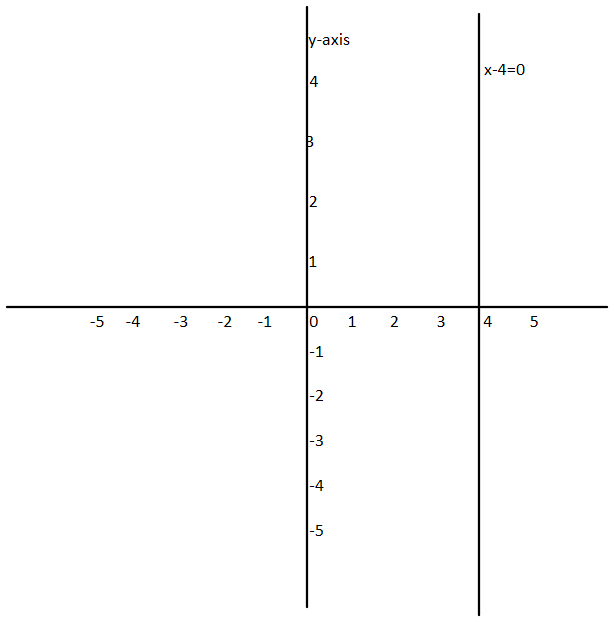Question
Question: How do you graph \(x - 4 = 0\)?...
How do you graph x−4=0?
Solution
Here we are given to plot the graph for the function which is given as x−4=0 and therefore let us make this given function as a function where we only variable on one side and constant on other and we will get x=4 and know that it represents the vertical line parallel to y−axis and passing the point (4,0).
Complete step by step solution:
Here we are given the function x−4=0 which is only in one variable and therefore we can convert it into the form where we have a variable on one side and the constants on the other side. So we can take −4 from LHS to RHS and we will get:
x−4=0 x=0+4 x=4
Hence we need to actually plot the graph of x=4
Whenever we have the graph of x=a we just need to draw the vertical line which is passing through the point a on the x−axis and is parallel to y−axis.
Hence we will get its graph as a vertical line which is passing through the point 4 on the x−axis and is parallel to y−axis.

Hence here we can see that we have plotted the graph of the line which is given to us as
x−4=0
So we can also notice that every point on the plotted line has its abscissa at 4.
Note:
Similarly when we are given to plot the graph of the line y=a then we need to plot the line which is passing through (0,a) and parallel to x−axis and therefore we must know the procedure to plot such graphs.
